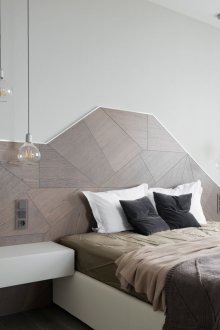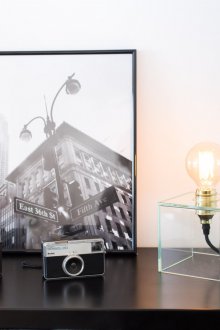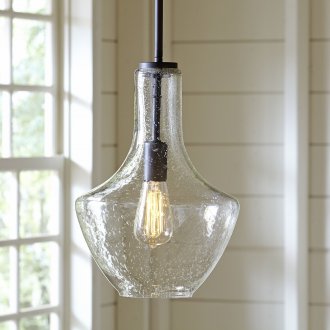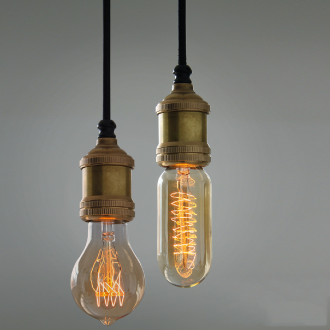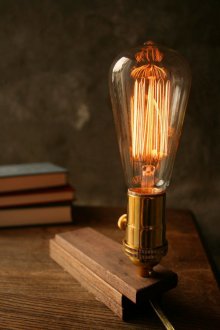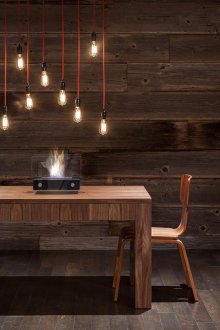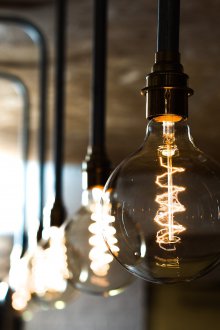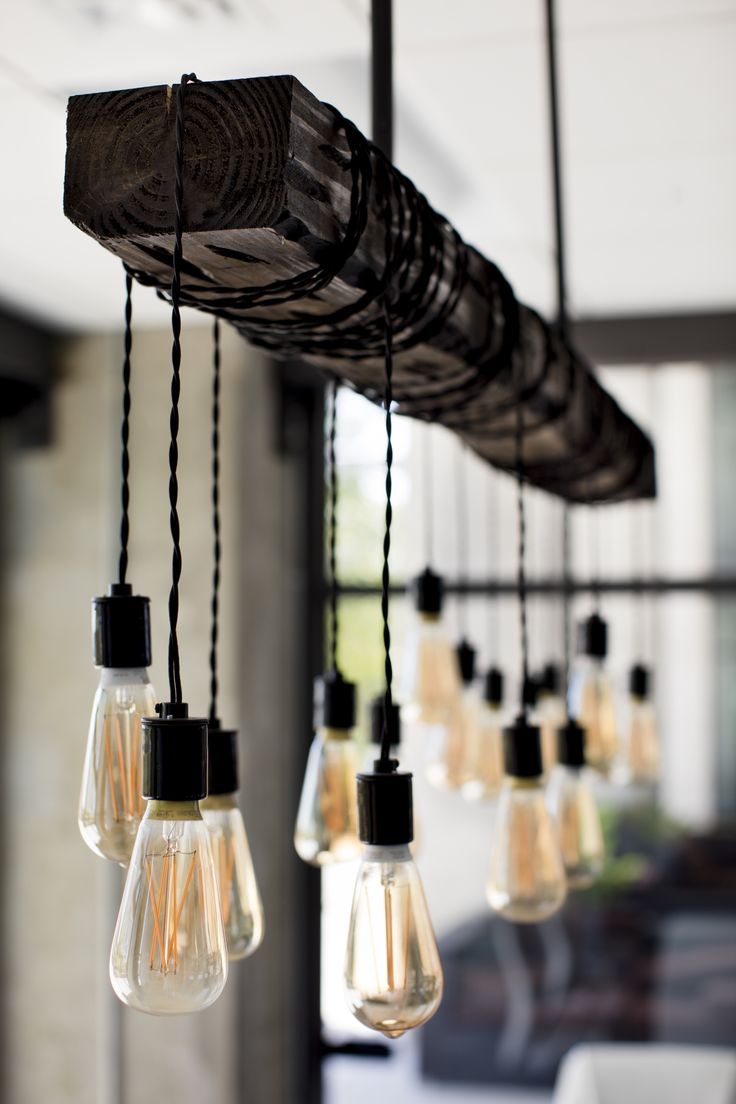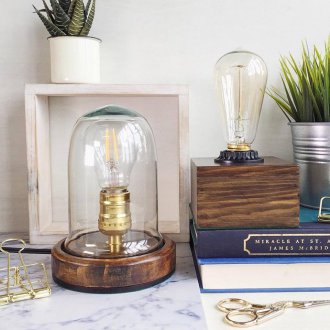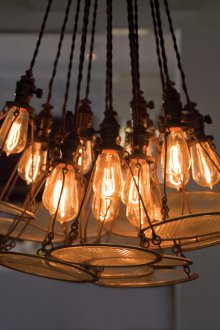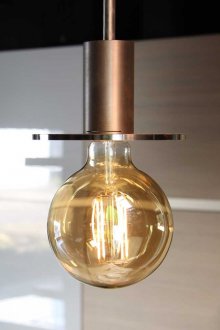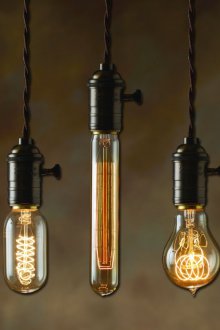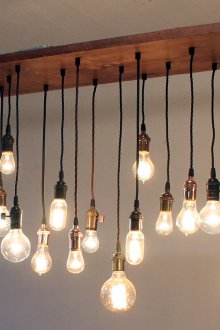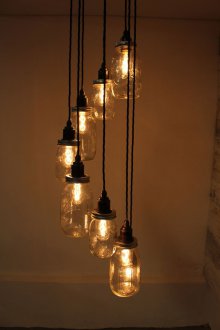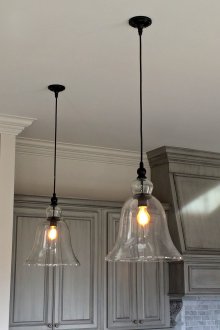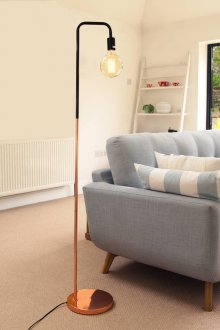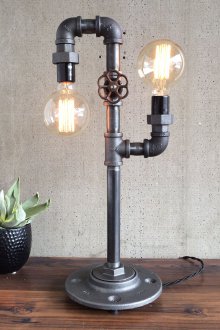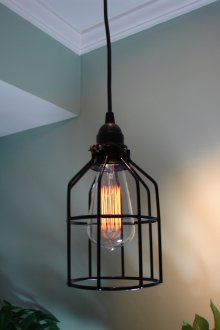Edison's lamp: soft glow in the interior (26 photos)
A light bulb familiar from childhood was invented by American inventor Thomas Edison and was named after him. Edison's lamp is an artificial light source in which, under the influence of an electric current, the glowing body emits light. The most commonly used tungsten spiral thread for this purpose. To isolate the light source from external influences, it is placed in a glass flask. Special holders fix the tungsten so that it does not come into contact with the outer shell.
The first samples were carried out in a vacuum version - air was pumped out inside the glass vessel. Now they do this with low power lamps. In high-power models, inert gas is pumped. It reduces heat loss, makes the work of the lighting device more rational and profitable.
Advantages and disadvantages
The ingenious inventor came up with a lighting device with a number of advantages, which until now, after 100 years, have not lost their relevance.
- Cheapness. This is one of the main advantages compared to other lighting fixtures.
- Easy to install. Even a child will screw a light bulb into a cartridge.
- Lamps have a long period of work.
- Available - can be purchased at any store.
- Universal - suitable for all household lighting fixtures, and until recently, have always been used in production. Chandeliers, table lamps, sconces, small spotlights of the ceiling type - incandescent lamps are suitable everywhere.
- Environmentally friendly. Natural external components and glass insulation of internal contents allowed to create an environmentally safe lighting device. At the beginning of the twentieth century, it was a revolutionary discovery, which allowed to abandon kerosene lamps and candles, known for their soot and smoke.
There is nothing perfect in the world, and lamps that have served for many years also have a number of negative qualities.
- Fragility. Thin glass flasks require careful handling of such lighting fixtures.
- Low tungsten spiral strength. An incredibly thin filament easily fails at the slightest vibration.
- Poor economy. Before the invention of LED lamps, a simple bulb had no alternative. With the advent of competitors, the question arose that old lamps spend most of their energy on heating a tungsten spiral. Today, this is the main disadvantage of lamps.
- Bad quality of light. The yellowish tint that accompanies even high power lamps affects the eyes badly.
It is impossible to look at the lamp, as a sharp and bright light hurts your eyes. However, based on the fact that this is the cheapest and most affordable type of lamp, nothing threatens the popularity of Edison's invention.
Application
Edison's discovery burst into everyday life and industry. Replacing old light sources was quick. For convenience in everyday life, lamps were put on lamps, lampshades that scattered light, made it less sharp and more pleasant to perceive. For this purpose, metal, fabric, frosted glass, and other materials were used. They made the use of lighting more comfortable.
The top of the decor for the lamps was crystal chandeliers.Incredible shapes of ceiling lights in several tiers, with a large number of crystal plates, made the room in which such a chandelier installed a solemn and radiant.
Depending on the need, lamps of various capacities were used. From this indicator, the size also changed.
During the time that has passed since the invention, the Edison lamp did not change the design. This is a glass bulb inside which an incandescent element is installed. Only the outer part of the fixtures changes - depending on the fashion, new technologies, shades, floor lamps and wall lamps change. The lamp remains unchanged, which is screwed into the lighting device. For use in special conditions, the design of the lamps changed depending on the need.
Narrow and long lamps for industrial use, small with low power for optical instruments, flashlights and equipment, conventional table lamps, microscopes, alarms - this is not a complete range of use of Edison's invention. The phrase that it is impossible to imagine our life without the invention of a talented American is not a formality, but a statement of fact.
Innovation for greater efficiency
Today, lamps of the last century have found a second wind. The lamp with Edison’s lamp belongs to the “retro” style; it creates a warm, cozy atmosphere in the room. New technologies have made lamp operation more efficient by reducing energy consumption for heating a tungsten filament. The alloy of tungsten and osmium makes the incandescent element more durable, and pumping inert gases into the flask reduces the energy loss on heating the alloy.
Do not disassemble the lamps yourself and unscrew the base.
The decorative design of the lamps in combination with new technologies allows you to create an intimate and comfortable atmosphere in the room. Edison's lamps in the interior of a modern house have not lost their relevance and are not going to lose ground. These are devices made using new technologies, more economical and efficient. The soft, golden light that they emit conquers lovers of home warmth and comfort.
Paying tribute to the fashion and discovery of Thomas Edison, modern designers have created new LED lamps in a style that mimics the beginning of the last century. Edison LED retro lamps fit perfectly into the interior of the room, designed in the old style. Creating a general atmosphere of the early twentieth century, such lamps have the advantages inherent in standard LED bulbs. As a rule, these are table lamps, lighting structures with special holders, made in the same old style.
Despite the fact that the invention of the American engineer for many years and today his find is called the Edison retro lamp, although thanks to modern technology, it does not lose its relevance. A new principle in the manufacture of lamps allows her to compete with the popular LED lamps. Even the inventors of LED lamps have largely repeated the development of Edison. All lamps are based on the principle of the famous American - under the influence of electric current, the source gives light to the environment. The new lamps use a different source, but it works in a glass bulb, like the first lamp.
